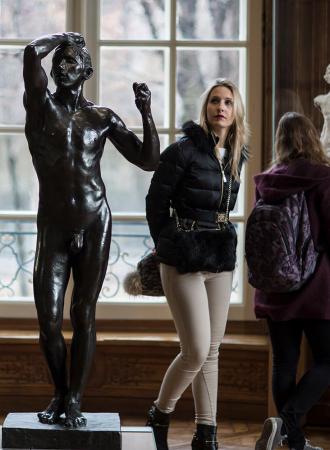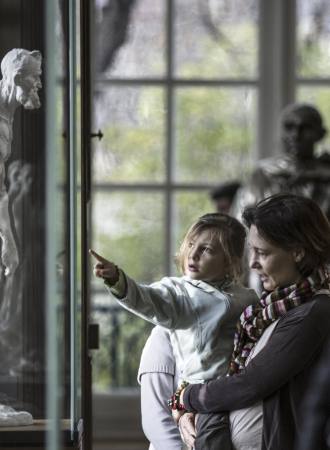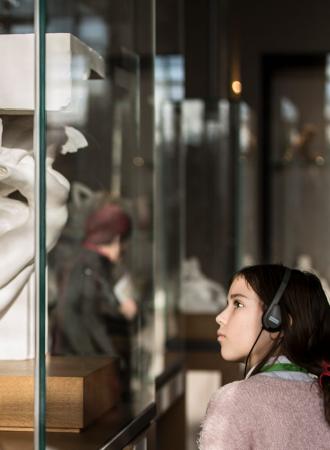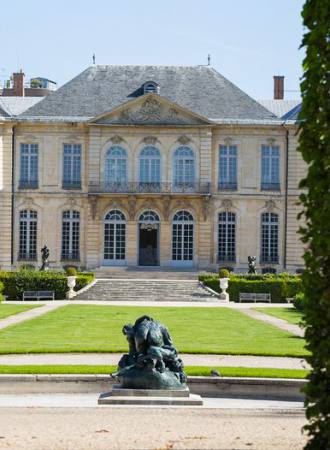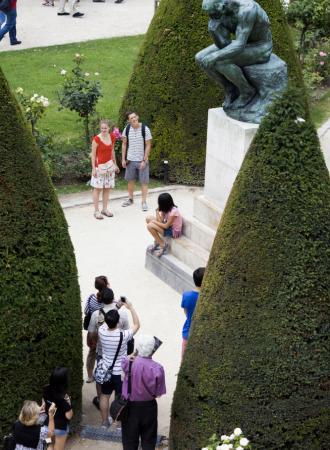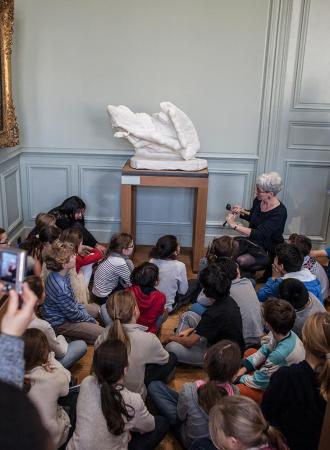Search the site
[Call for papers] 12th symposium for young researchers in sculpture
Sculptural modernities: the role of techniques and materials (19th-21st centuries)
Friday, April 4, 2025
Musée Rodin, Léonce Bénédite auditorium
This event will be webcast live
Submissions should be sent before February 7, 2025 to colloques@musee-rodin.fr
Headed by Sébastien Clerbois, professor in contemporary art history at the Université libre de Bruxelles, and Chloé Ariot, heritage curator, in charge of the sculpture collection at the Musée Rodin
In his Curiosités esthétiques from the Salon of 1846, Charles Baudelaire wrote:
“Harmony is foundational to color theory. Melody is unity in color, or general color. Melody wants a conclusion; it is a whole in which all the effects contribute to a general effect [...] The best way to know if a painting is melodious is to look at it from far enough away to understand nothing of it, neither the subject, nor the lines”.
Drawing upon this musical comparison, the poet’s aesthetic vision both enacts or legitimizes a profound upheaval within the order of classical visual traditions, casting open the gates to future artistic modernities. In short, contrary to the antique historia and the classical storia, art is no longer conceived as a mere vessel for narrative but emerges instead as a pure play of expression and effect.
This shift, however, is far from unprecedented in the annals of art history. Prior to the 19th century, Mannerism and 18th-century painting had already championed the virtues of pure painting. Yet, from the mid-19th century onward, this movement takes on revolutionary dimensions. Where the past strove for balance and harmony, contemporary modernity shatters the academic codes of the classical image, unleashing the expressive forces of the artwork.
But what about sculpture?
Art history, whose narrative is so often anchored to the history of painting, has long struggled to discern this phenomenon. It was only later that certain mechanisms—frequently technical in nature—were identified as indicators of sculptural modernity: the novel use of lost-wax bronze casting, the dismissal of material hierarchies, the revival of direct carving, the valorization of sketches, and more.
This movement seems to gain even greater strength as industrialization, burgeoning throughout the 19th century, expands the possibilities for sculpted works to be reproduced. However, this comes at the expense of what some regard as the aura of the artwork: its unique essence, shaped by an irreducible singularity or an expressive intensity. These are precisely the qualities that modern, and later avant-garde, artists increasingly were seeking.
In the shadow of Walter Benjamin’s renowned essay, The Work of Art in the Age of Mechanical Reproduction, and its concept of the aura, a significant portion of art historiography has heavily essentialized the relationship between sculptural modernity and technique. In doing so, it has often overlooked the fact that Benjamin’s text is more of an avant-garde manifesto than a philosophical treatise, and that regardless of how it is considered, sculpture remains, at its core, an art of reproduction—and thus, an art of multiplicity. One can consider, for instance, Rodin, subverting the technical processes of reproduction through casting in favor of a significant practice of fragmentary composition—marcottage. One can also consider Jef Lambeaux, harbinger of the lost-wax casting technique that was used to recapture the expressive vitality of the Flemish Baroque. In both cases, we are reminded that expressiveness is more a result of a so-called “raw” unchiselled casting than a product of the lost-wax method itself.
The time has surely come to reclaim this question: what are the connections between the materials and techniques of sculpture and the expression of artistic modernities? How have sculptors' technical or material approaches shaped the very definition of modernity, or contributed to the creation of a discourse around artistic modernity? What kind of balance can there be between genuine technical innovation and the discourse around technique? How have artists truly embraced new methods or repurposed traditional ones to express modernity? Furthermore: how has technicity been used by artists to serve a narrative—truthful or not—crafted to foster modern perceptions of their work within collective representations?
The avant-garde movement was punctuated with disruptions that intensified at a rapid pace. Industrial techniques and materials—welding, poured concrete, Corten steel, and more—flooded the realm of possibilities. What meanings can be attributed to these new material realities?
From the diachronic perspective of sculpture’s evolution in the modern and contemporary eras (19th to 21st centuries), this research symposium will seek to take stock of the meaningful connections between the distinctive use of materials and techniques and the construction of sculptural modernity.
It shall be articulated along the following lines of inquiry:
- The mutational status of sketches
- Choice of particular techniques or materials
- Technical innovation and research
- The role of materiality within the discourse on artworks
- Symbolic investment in a material or technique
- Dismissal of technicity, return to direct carving, to humble materials
- Mechanization
Submissions
Submissions should include a title, an abstract (between 1,500 and 2,000 characters) and a brief biographical note (between 500 and 1,000 characters). They should be sent before February 7, 2025 to colloques@musee-rodin.fr.
Research committee
- Sébastien Clerbois, Professor in contemporary art history at the Université libre de Bruxelles
- Amélie Simier, Chief Curator of Cultural Heritage, Director, Musée Rodin
- Chloé Ariot, Heritage Curator, in charge of the sculpture collection, Musée Rodin
- Véronique Mattiussi, Head of the Research Department, Musée Rodin
- Franck Joubin, Researcher and Conference Coordinator, Musée Rodin
